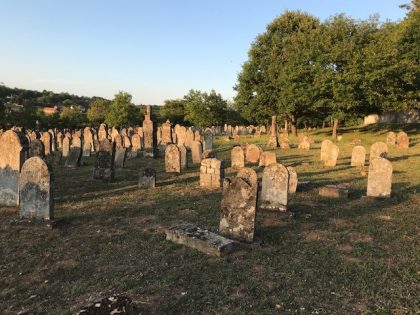As the ancestral land of French Judaism, Alsace is making a major effort to share the Jewish cultural heritage so deeply rooted in the region’s history. Meet Marc Friedmann, Vice-Chairman of the European Days of Jewish Culture and Heritage – Alsace, to find out what events await you this autumn in Alsace’s many towns and cities.

Jguideeurope: Which towns in Alsace take part in the EDJC?
Marc Friedmann: Alsace differs from other regions in that it is highly decentralized, with a network of dozens of correspondents and organizers spread throughout the region. This is hardly surprising, given that the idea of days devoted to Jewish culture and heritage was born in Alsace 25 years ago. At the time, the idea was to raise public and municipal awareness of the need to safeguard an essentially rural Jewish material heritage threatened by demolition, ruin or reallocation incompatible with the worthy preservation of a Jewish memory. This network has endured and grown, evolving in step with the future of this heritage. As a result, this year, as in previous years, the European Days of Jewish Culture will take place in more than 30 different Alsatian communes, from the largest city, Strasbourg, to villages with fewer than 1,000 inhabitants, such as Rosenwiller (which boasts one of the oldest cemeteries in Alsace) or Struth (home to a beautifully restored synagogue dating from the first half of the 19th century).
How is the theme of Memory approached in the Alsace region, with its long Jewish history? Are certain periods given priority?
In a way, the European Days of Jewish Culture in Alsace have always had the ambition, through the opening to the public of synagogues, cemeteries and ritual baths, to commemorate the many rural Jewish communities which for the most part disappeared either immediately after the Shoah, or in the second half of the 20th century as a result of the rural exodus. The “Memory” theme is thus “naturally” approached through the memories of village elders who recall the Jewish presence and have passed on to the next generation the desire to carry out historical and genealogical work on the Jewish heritage, which is an integral part of their commune’s heritage. A number of local history societies are among the organizers of the events proposed in Alsace for these EDJC.
In Strasbourg, the memory of the medieval Jewish community and its tragic fate during the Black Death (1349) is the subject of much interest. The Tourist Office and the Université Populaire offer guided tours of this medieval community, including of course the medieval Jewish ritual bath (dating from around 1200) in the rue des Charpentiers, discovered in 1985.

What little-known part of Alsace’s Jewish cultural heritage deserves to be highlighted?
While the 60 or so preserved (but sometimes transformed) synagogues and 67 Jewish cemeteries are most often mentioned, it’s worth highlighting the museums in Alsace that display Jewish furnishings or evoke the Jewish presence in Alsace. Foremost among these is Strasbourg’s Musée Alsacien, which houses a major collection of Jewish furniture and objects assembled by SEJAL, the Société d’étude pour le judaïsme en Alsace-Lorraine (formerly SHIAL). The Musée judéo-alsacien in Bouxwiller will be dedicating the day of September 3 to the memory of its founder, Gilbert Weil, who passed away at the beginning of the year, and will be offering cultural events (exhibitions, concerts) alternating with the ceremonies and tributes. Other museums also deserve to be highlighted: the Musée du patrimoine et du judaïsme alsacien in Marmoutier, the Musée du Bucheneck in Soultz-Haut-Rhin, the Musée du Pays de la Zorn in Hochfelden (housed in the former synagogue) and, last but not least, the Musée de l’Image Populaire in Val-de-Moder, which looks after the beautiful synagogue (late 18th century) in Pfaffenhoffen. This year, all these museums are organizing events as part of the EDJC.
Can you share with us a moving encounter with a visitor at a previous EDJC?
Many of the encounters I’ve had during the EDJC have been emotional, particularly during the guided tours of cemeteries I’ve sometimes led. The work of remembrance around the headstones or commemorative plaques (in the case of those who disappeared in the Shoah) is an opportunity to awaken memories held by non-Jewish members of the public, or perhaps with descendants who have come from far away and are taking advantage of the opening of their family’s “home” on that day. Indeed, that’s what Jews call their cemeteries… During such a guided tour, it’s also very moving for me to cooperate with a “memory watchman”, a volunteer who has registered with the department (Collectivité européenne d’Alsace) to watch over the security and preservation of his village’s cemetery.